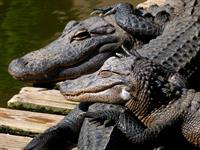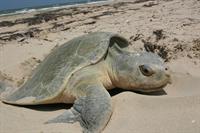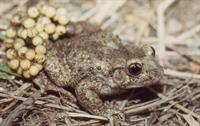OTRĀ SEMESTRA NOSLĒGUMA TESTI
Read the articles and match with pictures and write in the headlines.
(Izlasi tekstus un savieno ar attēliem un ieraksti virsrakstus!)
B  | C  |
A  | D  |
Headlines:
The father’s “backpack”, Amazing frogs, A predator is born, The father gives the birth to his babies, The attraction of the cradle
Headline and Text | Picture |
While many frogs leave their spawn to their own devices in the water, the male of the common midwife toad has developed an unusual reproductive method. He winds his bride’s row of eggs around his thighs like string of pearls and carries them everywhere he goes. The male midwife toad tries to keep predators away from himself and his string of eggs by emitting a strong-smelling poison from the warts on his back. He only releases the spawn when the eggs are about to hatch. The father then goes into shallow water and a short time later the tiny tadpoles wriggle out of the eggs into the water. | |
In the world of seahorses, the roles are reversed. In their case it is the male that brings the offspring into the world. After the mother deposits the eggs in the pouch on the father’s body, he fertilizes them. Here the eggs develop and, after a few weeks, the young come into the world one by one through the contraction of the pouch. | |
As crocodiles are cold-blooded, they cannot keep their eggs warm and so they make a “hotbed” for them. The female Nile crocodile digs a hole in the sand on the river bank, where she lays her eggs. The mother does not leave the eggs to fend for themselves, but assumes her full parental duty, fighting tooth and claw to protect them. When the hatchlings emerge, they only have to “whistle” and their mother comes running to dig them out of the nest. The lot of newly hatched young is made easy as, instead of having to walk, the mother carries them in her mouth to the safety of shallow water and to food. Hatchlings that are unable to break through the hard shell can only hope for their mother’s help, who will break it with her jaw to let them out. | |
When the nesting season comes for hawksbill turtles, the females leave the sea for the only time in their life and seek out the place where they themselves were born. Having crawled onto the sandy beach, they dig a deep pit and lay up to 150 eggs in one clutch. The hard work, however, has only just begun as the defenceless eggs must be hidden from predators. They expend the rest of their energy covering the nest, which is made more difficult as they have to lift themselves up from the ground every time they inhale. |
Atsauce:
"Astonishing facts about animals", Graphart Publishing, Hungary
Lai iesniegtu atbildi un redzētu rezultātus, Tev nepieciešams autorizēties. Lūdzu, ielogojies savā profilā vai reģistrējies portālā!